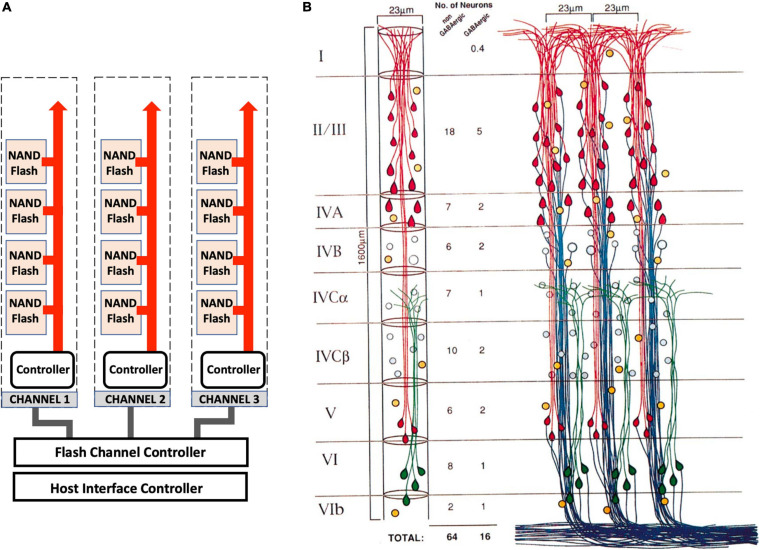FIGURE 6.
Architectural similarities of memory storage in silico and in vivo. (A) A high-capacity SSD storage device is incredibly complicated, but its general architecture is arranged into a logical repeating structure of pages, arranged into blocks that are arranged into memory modules (NAND Flash). These hierarchical structures are linked to channels that connect each memory module to a memory controller that controls the data coming in and out of the drive and directs current to the relevant pages and transistors for data read-write. (B) The cortex shares a similar logical architecture. Three cortical columns are shown that are equivalent to the SSD channels. These columns contain layers (I–VI) that are comprised of minicolumns (the memory modules equivalent to the NAND Flash), which are comprised of circuits of pyramidal neurons (the blocks) that contain tens of thousands of MeshCODEs in the synapses and dendritic spines (the pages). Each column is linked with read and write channels back to the hippocampus. Adapted with permission from Peters and Sethares (1996).

